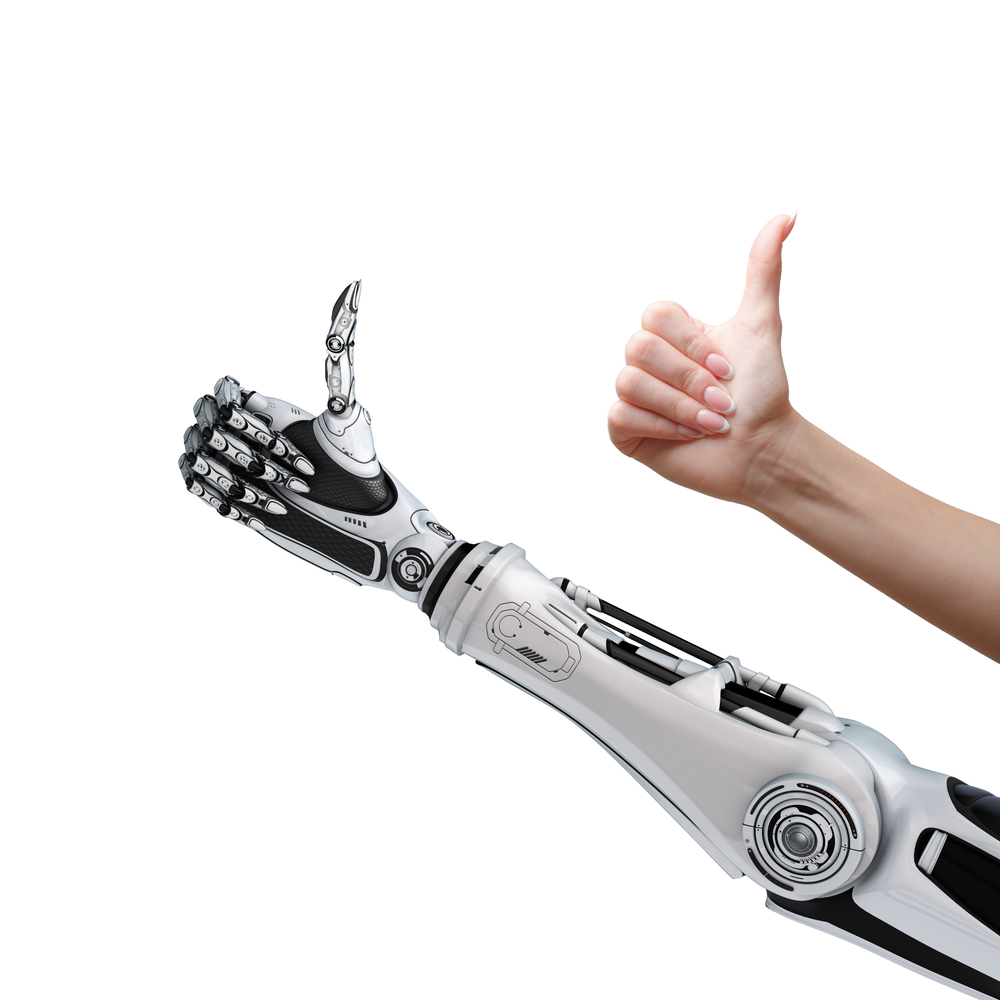Brain Implant That Moves Moves Robot Arm Could Someday Help MS Patients With Paralysis

A new robotic device could help people with all types of paralysis, including patients with multiple sclerosis.
Erik Sorto is the first person to benefit from the device. Paralyzed at age 21 from a gunshot wound, he is now able to move his robotic arm through the power of his own thoughts. People with multiple sclerosis, a neurodegenerative disorder characterized by loss of movement, may similarly benefit from the new technology in the future.
The California Institute of Technology, Keck Medicine of USC and Rancho Los Amigos National Rehabilitation Center, implanted the now-34 year-old Sorto with the device, making him the first person with a new type of neural prosthetic. The device is implanted in a brain region called the parietal cortex, allowing him to perform all sorts of movements and tasks with his robotic arm.
Previously, scientists implanted neural prosthetics in a part of the brain called the motor cortex. Scientists had chosen the motor cortex because this part of the brain controls movement. However, the motor cortex-controlled robotic arms were shaky and inconsistent, due to the fact that this part of the brain only gives basic commands to the nervous system to conduct movements. Sorto’s implant in the parietal cortex benefits from accessing not the basic movement commands of the brain, but rather the intention or desire to make a movement, allowing him to move the arm more smoothly and deliberately. Sorto remarked, “I was surprised at how easy it was. I remember just having this out-of-body experience, and I wanted to just run around and high-five everybody.”
The scientists responsible for the new technology include principal investigator Richard Andersen, James G. Boswell Professor of Neuroscience at Caltech, neurosurgeon Charles Liu, professor of neurological surgery, neurology and biomedical engineering at USC and neurologist Mindy Aisen, chief medical officer at Rancho Los Amigos.
Liu and coworkers placed a pair of 4×4 “electrode arrays” consisting of 96 electrodes each in two parts of a brain region called the posterior parietal cortex. The arrays connect via cable to computers that process what Sorto wants to do, and the computers in turn control the robotic arm.
“These arrays are very small so their placement has to be exceptionally precise, and it took a tremendous amount of planning — working with the Caltech team to make sure we got it right,” remarked Liu. “Because it was the first time anyone had implanted this part of the human brain, everything about the surgery was different: the location, the positioning and how you manage the hardware. Keep in mind that what we’re able to do — the ability to record the brain’s signals and decode them to eventually move the robotic arm — is critically dependent on the functionality of these arrays, which is determined largely at the time of surgery.”
There is great hope that this kind of device may be used for other sorts of paralysis. Because multiple sclerosis involves degeneration of myelin (the insulation that surrounds nerve fibers allowing them to communicate), rather than a one-time paralysis such as via a gunshot, the device may need to be tailored for this disorder specifically. Scientists, however, have hope that many other neurological problems may receive effective treatments.
“We are at a point in human research where we are making huge strides in overcoming a lot of neurologic disease,” stated Christianne Heck, associate professor of neurology at USC and co-director of the USC Neurorestoration Center. “These very important early clinical trials could provide hope for patients with all sorts of neurologic problems that involve paralysis such as stroke, brain injury, ALS and even multiple sclerosis.”






